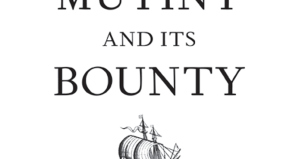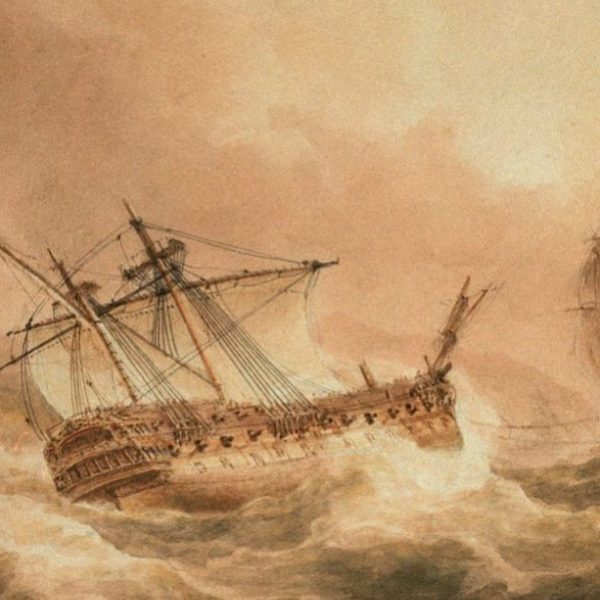Mutiny Profiles: Christopher Columbus
 Columbus shows today’s leaders how to use communication skill to spirit people to the edge of success and failure, and then use mutiny as a force to carry them over the line to success.
Columbus shows today’s leaders how to use communication skill to spirit people to the edge of success and failure, and then use mutiny as a force to carry them over the line to success.
Patrick J. Murphy and Ray W. Coye’s Mutiny and Its Bounty: Leadership Lessons from the Age of Discovery explores how great seafaring captains like Columbus and Magellan not only quelled mutinies but also built upon such incidents to strengthen their enterprises. Today’s organizational leaders have much to learn about leadership and tactics from these earlier masters. Learn more and read a short excerpt from the book below.
A few leadership qualities of the great Christopher Columbus:
- Copious note taker
- Able to reinvent himself (in Italy, Portugal, Spain)
- Used mutiny to help his first enterprise
- Had an incredible ability to communicate and to motivate others
Patrick J. Murphy and Ray W. Coye—
 Compared to other seafarers, Columbus was an uncommonly dedicated journal keeper and strategic planner. His seafaring prowess was based on what he learned from the Portuguese and from counting and recording every single thing he could observe and research. He viewed the Italian explorer Marco Polo with cultural pride. Columbus’s own copy of Polo’s writings is filled with his critical marginalia. For his proposed venture to the west, Columbus had “determined to keep an account of the voyage, and to write down punctually everything we perform or say from day to day.” He promised Queen Isabella that he would “draw up a nautical chart, which shall contain the several parts of the land in their proper situations; and also to compose a book to represent the whole by pictures, with latitudes and longitudes, on which all accounts it behooves me to abstain from sleep and make many efforts in navigation, which things will demand much labor.” As a manager, his style was based on evidence and hard work. As a leader he relied on the transformational effect of his ability to persuade others, as we shall see.
Compared to other seafarers, Columbus was an uncommonly dedicated journal keeper and strategic planner. His seafaring prowess was based on what he learned from the Portuguese and from counting and recording every single thing he could observe and research. He viewed the Italian explorer Marco Polo with cultural pride. Columbus’s own copy of Polo’s writings is filled with his critical marginalia. For his proposed venture to the west, Columbus had “determined to keep an account of the voyage, and to write down punctually everything we perform or say from day to day.” He promised Queen Isabella that he would “draw up a nautical chart, which shall contain the several parts of the land in their proper situations; and also to compose a book to represent the whole by pictures, with latitudes and longitudes, on which all accounts it behooves me to abstain from sleep and make many efforts in navigation, which things will demand much labor.” As a manager, his style was based on evidence and hard work. As a leader he relied on the transformational effect of his ability to persuade others, as we shall see.
…
Mutinies were so natural in the Age of Discovery that they could be reliably expected to occur in just about any bold seafaring enterprise. They were a normal part of taking risks together in organized but uncertain settings. Leaders and members abided by an authority structure, but proximity during an enterprise made for a certain sense of equality. All leaders directly experienced mutiny. Great leaders knew how to respond effectively to mutiny, often through means so artful as to transform it into success. Because mutiny is a force, it ought to be possible ot leverage it in creative ways to serve a human enterprise. The culture of the Age of Discovery, especially in its early years, admitted these kinds of possibilities.
…
Columbus’s first enterprise is an excellent illustration of how a leader can respond to subtle and underlying tension when it flashes into mutinous action. In fact, he incurred at least two mutinies during his first and most famous venture to the New World.
The boldness of Columbus’s venture raised the bar for all other seafarers. At age forty, he led an enterprise comprising three ships and 120 members. The ship sailed past Palos and into the ocean on August 3, 1492. But months before the departure, the atmosphere around the enterprise had been uncomfortable. Columbus noted that the crew grumbled from the start about the long distance ahead and the uncertainty. Three days after leaving port, crew on the Pinta, reluctant to keep sailing away from familiar territory, sabotaged its rudder. Columbus was unflappable in response to such incidents. The Pinta‘s rudder was repaired at the Canary Islands as it was refitted with square sails. Such bothersome matters as sabotage stemmed in part from the royal decree given to Columbus. It prohibited Portuguese from joining the enterprise and authorized exoneration of crimes for those Castilians who did join. The latter allowance ensured the requisite number for an enterprise that “should not proceed by land to the east, as is customary, but by a westerly route.” It also attracted criminals while repelling good sailors, and it discouraged ship owners from lending their vessels to the ambitious project of a clever foreigner who had become known in Palos as a madman and a maniac. Yet sabotage, problems with crew membership, and unflattering perceptions of his character had no chance of breaking Columbus’s spirit. To the contrary they reinforced it.
Excerpted from Mutiny and Its Bounty: Leadership Lessons from the Age of Discovery. Copyright © 2013 by Patrick J. Murphy and Ray W. Coye. All rights reserved.





Everyone knows of Columbus’s first voyage in 1492, but not everyone knows he made three more after that, the last 10 years later in 1502. On the first voyage there were “threats” of mutiny but nothing came of them. However, on the last voyage, with Columbus and his crew marooned in Jamaica, there WAS a mutiny. Half of the crew abandoned the Admiral and took off into the mountains where they robbed and raped the natives. Later there was a showdown resulting in a battle that left several dead.
I detailed this in my book, “Adversity’s Wake.” http://www.amazon.com/s/ref=nb_sb_noss?rh=n%3A133140011%2Ck%3Aadversity%27s+wake&keywords=adversity%27s+wake&ie=UTF8
It is available through Amazon.com.
Those threats of mutiny on Columbus’s first enterprise did not turn into actual mutinies precisely because of how Columbus managed and led his first enterprise. That’s the focus of our Ch 1. This book is for mutineers as well as for leaders (who would seek to quell mutiny). Of course, in the other cases we covered (e.g., Magellan and Cabot) there were full-blown and violent mutinies. Your book looks very interesting. Cheers mate. PJM